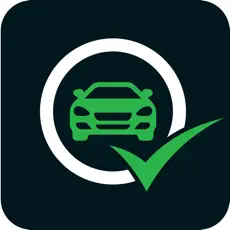If you’ve ever been in a situation where you needed to find the Vehicle Identification Number (VIN) of a car, truck, or motorcycle, you know how important that information is. The VIN is a unique code used to identify a specific vehicle, much like a fingerprint for a car. It holds crucial details about the vehicle, including its make, model, year of manufacture, and history. In this guide, we’ll walk you through how to find your VIN number online, step by step.
What is a VIN Number?
A Vehicle Identification Number (VIN) is a 17-character code assigned to every vehicle at the time of manufacturing. It provides information about the vehicle’s make, model, engine type, place of manufacture, and more. You can think of it as the car’s unique identification.
The VIN is used for various purposes, such as registering the vehicle, tracking its history, checking for recalls, or even verifying its ownership. Knowing where to find your VIN can save you time and trouble when buying a used car or looking up important vehicle details.
Why is the VIN Important?
The VIN is essential for several reasons:
- Vehicle History Reports: A VIN allows you to check for any accidents, flood damage, title issues, or odometer discrepancies in a car’s history.
- Registration & Insurance: The VIN is used for registering your vehicle with the DMV and for insurance purposes.
- Theft Recovery: The VIN helps law enforcement track stolen vehicles.
- Recalls & Service: Manufacturers use the VIN to notify owners of recalls or required maintenance.
Step-by-Step Guide: How to Find Your VIN Online
Finding your VIN online is a simple process, and you can do it from the comfort of your own home. Here’s how to locate it:
1. Use a Vehicle History Website
There are many websites where you can easily search for your VIN number by simply entering the vehicle’s details. Vinautochecker is one such site where you can quickly find your VIN and receive a detailed report on the vehicle’s history.
Simply visit a site like Vinautochecker, enter basic vehicle information like the make, model, and year, and the platform will pull up the VIN and detailed history of the vehicle.
2. Check the Vehicle’s Dashboard
The most common location to find the VIN is at the lower left corner of the dashboard, just above the windshield. Look through the driver’s side window, and you should be able to see a small plate with the VIN etched on it. You can also take a picture of this to keep a record.
3. Look Inside the Driver’s Side Door
Another common spot for the VIN is inside the driver’s side door frame. Open the door, and look for a sticker or metal plate on the door frame (usually near the door latch). This area often includes the VIN along with other information like tire pressure and weight limits.
4. Check the Vehicle’s Title and Registration
If you have access to the vehicle’s title or registration papers, the VIN should be listed there as well. In fact, these documents are the most reliable sources for locating a VIN.
5. Use a Mobile App
Several mobile apps can scan your VIN directly from your vehicle or even your documents. If you have the physical VIN available, apps like Carfax or VIN Scanner can help you scan the VIN and pull up its details.
6. Visit the Manufacturer’s Website
In some cases, manufacturers may have online tools to help you find your VIN. You may be able to locate it on the manufacturer’s website by entering details about your vehicle.
Common Mistakes to Avoid While Searching for Your VIN
When searching for your VIN, it’s important to avoid common mistakes that could result in inaccurate or incomplete information. Here are a few things to watch out for:
- Misreading the VIN: Since the VIN is a 17-character code, it can be easy to misread a number or letter. Pay close attention, especially to characters like I, O, and Q, as they can look similar to the numbers 1 and 0.
- Entering Incorrect Vehicle Details: If you’re using a service like Vinautochecker, make sure the information you provide (like the make, model, and year) is accurate. Even small errors can lead to incorrect VIN results.
- Not Using Reliable Sources: Always use trusted and reputable websites for VIN lookups. Some lesser-known sites may provide inaccurate or outdated information.
Conclusion
Knowing how to find your VIN number online can save you time and hassle when checking a vehicle’s history or registering a new one. By following this simple step-by-step guide, you can easily locate your VIN and use services like Vinautochecker to get a detailed report on your vehicle’s history. Always double-check your information to avoid common errors, and make sure to use reliable sources for VIN lookups.
Whether you’re buying a used car, selling a vehicle, or simply keeping track of your own, understanding how to find and verify a VIN is an important step in ensuring you’re getting accurate, trustworthy information.
